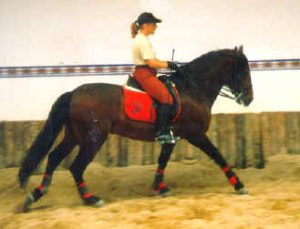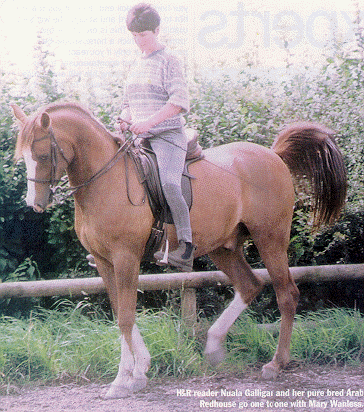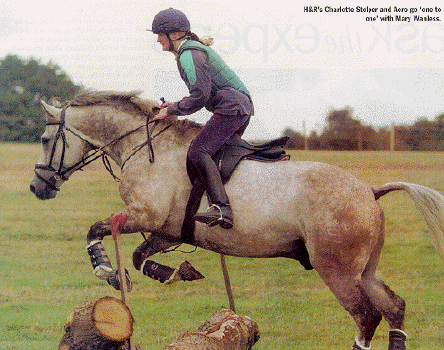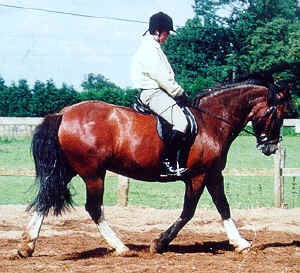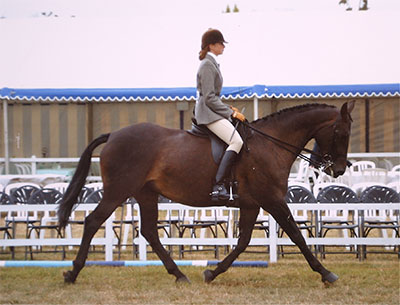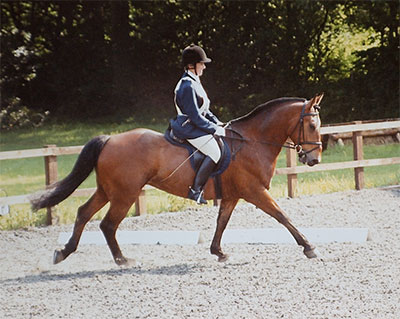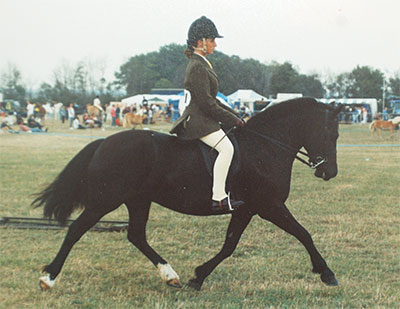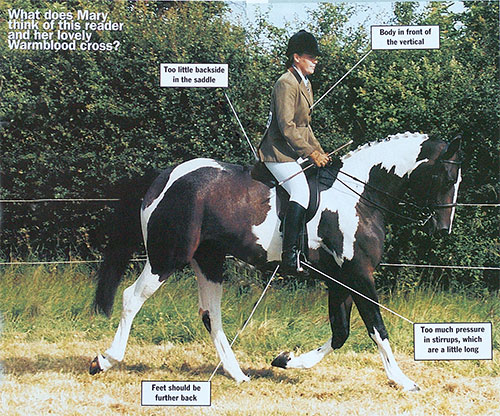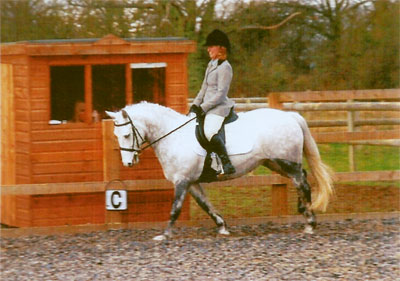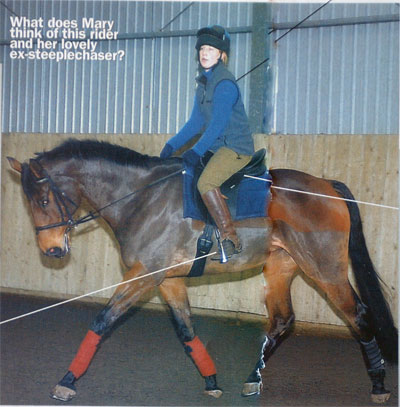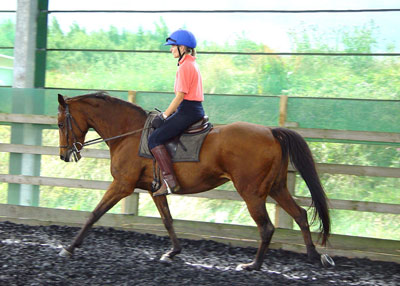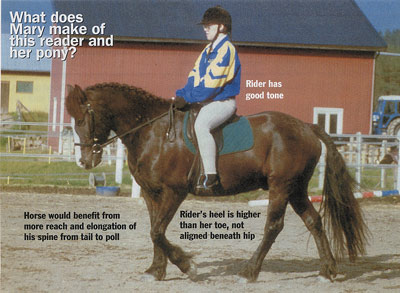RWYM
Article 1
This photograph has been sent in from America, by a reader who has lived most of her life in Spain. Her horse is a pure bred Spanish Andalusian stallion who is five years old, and he looks to me like a very handsom chap. Whilst I have little experience with Andalusian horses, I have ridden a number of Lusitano (Portuguese) horses both here and in Portugal, and the two breeds are very similar. The Iberian horses are often thought of as the Labradors of the horse world, and like Labrador dogs they are everyone’s friend, and are extremely easy to handle.
You might be surprised to see a five year old horse wearing a double bridle, and in our culture, that would certainly be frowned upon. However, in Spain and Portugal the horses are introduced to the double very early in their career, and it rarely causes problems. However, I am not sure that I would work my young horse in a double, and instead I would want to demonstrate to myself that I could do the work well in a snaffle. This is perhaps ironic that the horses who have the reputation for being born on the bit, with a naturally rounded carriage, should be the ones who are traditionally worked in the bridle which is deemed most able to create that carriage in difficult horses!
Our horse is pictured in canter right. The diagonal pair of legs is on the ground, and the inside foreleg is about to become weight bearing. The rider is doing a good job, and there is a lot to like about her body-use. She is not growing up tall, pulling her ribs away from her hips, and creating the exagerated hollow back that one sees in so many riders. There is a good, strong, line to her back, resembling the line you would see in a skilled martial artist. Her shoulders and upper arm hang unusually well, although her head lies in front of the ideal ear-shoulder-hip-heel vertical line. To challenge this would (in my view) be nit-picking, and far more significant is the position of the lower leg, which puts her heel in front of that line.
In terms of rider biomechanics, this means that she is not as responsible for her body weight as one would like to see i.e. her centre of gravity is not directly over her feet. If the stirrup were the edge of a diving board, she would ideally be balanced over it as if she were a diver about to do a backward dive. But since her body is behind the line of the stirrup, she would, in fact, have dived off already. What is good about her leg position, however, is that she is not bracing down into the stirrup, creating the push down which straightens her joints and causes an equal and opposite push up.Try this as an experiment: whilst sitting in a chair, push down into one foot. What happens to your buttock on that side? You’ll find that it lifts, demonstrating the principle. To glean even more learning from this experience, push down on the other foot instead. That side will also lift, but the feeling in your body will almost certainly be less familiar. Instinctively, you will have chosen to do the initial experiment on the side of your body on which you tend to defy gravity. You have unearthed an interesting fact about your asymmetry.
Our rider does not have an asymmetry which we can see from this angle, so let’s look more closely at her horse. Although her curb rein does not appear to be excessively tight, his mouth is open. Look carefully at his upper lip. He is holding it tensely, demonstrating the ‘stiff upper lip’ for which we British are renowned. He is not completely at ease with what is happening – and perhaps he is not completely at ease with being ridden. The upper lip is believed to have a direct connection to the limbic system, which is the seat of the emotions, so we are seeing a highly significant tension. I have met horses who held their lip like this for most of their working lives, and the best riding we could muster rarely put them at ease. Linda Tellington-Jones suggests that you repeatedly massage the upper lip of a horse who demonstrates this pattern, keeping going until he relaxes it. I think that would be well worth doing with this horse, and whilst I am sure that he is a kind and generous soul, he is emotional enough to need a rider with good biomechanics and a sympathetic hand.
The biggest deal for me about this photograph is that the horse is not as round as one would like him to be. He could come up a lot more through his back, and reach into the rein with a neck which would then look longer and more arched. (Next month’s article illustrates this particularly well.) Whilst our rider is sitting well, and is not doing a lot wrong, she is also not doing enough right. Specifically, she is not generating suction in the way that she needs to.
The first point to appreciate here is that the horse comes onto the bit when his back lifts, rather than when his head comes down. As rider, your job is to organise his back; it is his job to organise his head – which will naturally come into place when it hangs off the end of a correctly organised spinal column. So the burning question is, ‘How do you organise his back?’ For me, this is the key question that is answered by the new science of rider biomechanics.
Let me explain by using an analogy. Suppose that you have a blockage in the ‘U’ bend of your sink. If you put your sink plunger over the plug hole and leave it there, not much will happen. Sitting the rider on the saddle and expecting the horse’s back to come up is rather like putting your sink plunger over the plug hole and expecting your ‘U’ bend to clear! The ‘up down up down’ which makes the sink plunger do its job is a pumping action; the rider, in contrast, creates an ‘up’ and a ‘down’ simultaneously. This rider has the ‘down’ working well, but she does not have the ‘up’.
I know that the ‘down’ is functioning because of the line up of her torso, and the way that her pelvis contacts the saddle. A rider who was lifting her ribs, hollowing her back, and raising her backside out of the saddle would have to start by correcting this; but our rider is ‘globbed’ onto the horse in the way she needs to be before she can do suction. (Remember that you cannot pick anything up until you have made contact with it.) She now needs to think of herself lifting the middle of the horse. She needs to think of supporting her own body weight instead of relying on the horse to hold her up. It is as if she is going through the very early stages of getting up out of a chair (try it), except that she has barely moved, and in her case the chair (horse) comes up with her.
Another image which often works is to think of those machines they use to scrap old cars, where the car is picked up by four arms, and then squashed into a rectangle. You don’t have to squash the horse into a rectangle, but you do have two ams to pick him up with – which are your legs. Unlike most trainers, I believe that it is the thigh more that the calf which does this lifting. All of the thigh muscles are involved, and if you stand for any length of time in an ‘on horse’ position, you will discover how much work your quadriceps (at the front of your thigh) have to do to hold you up. Once you start doing this on the horse it can have drammatic effects on his carriage, and you discover the difference between putting the sink plunger over the plug hole (as it were) and doing the muscular work which generates suction. These great results do not come for free; when your rider bemechanics become effective you know you are doing it!

